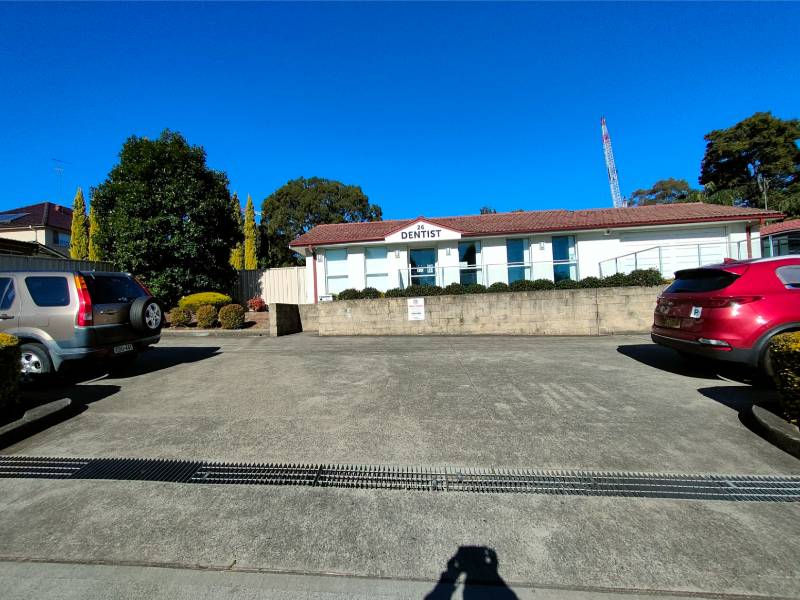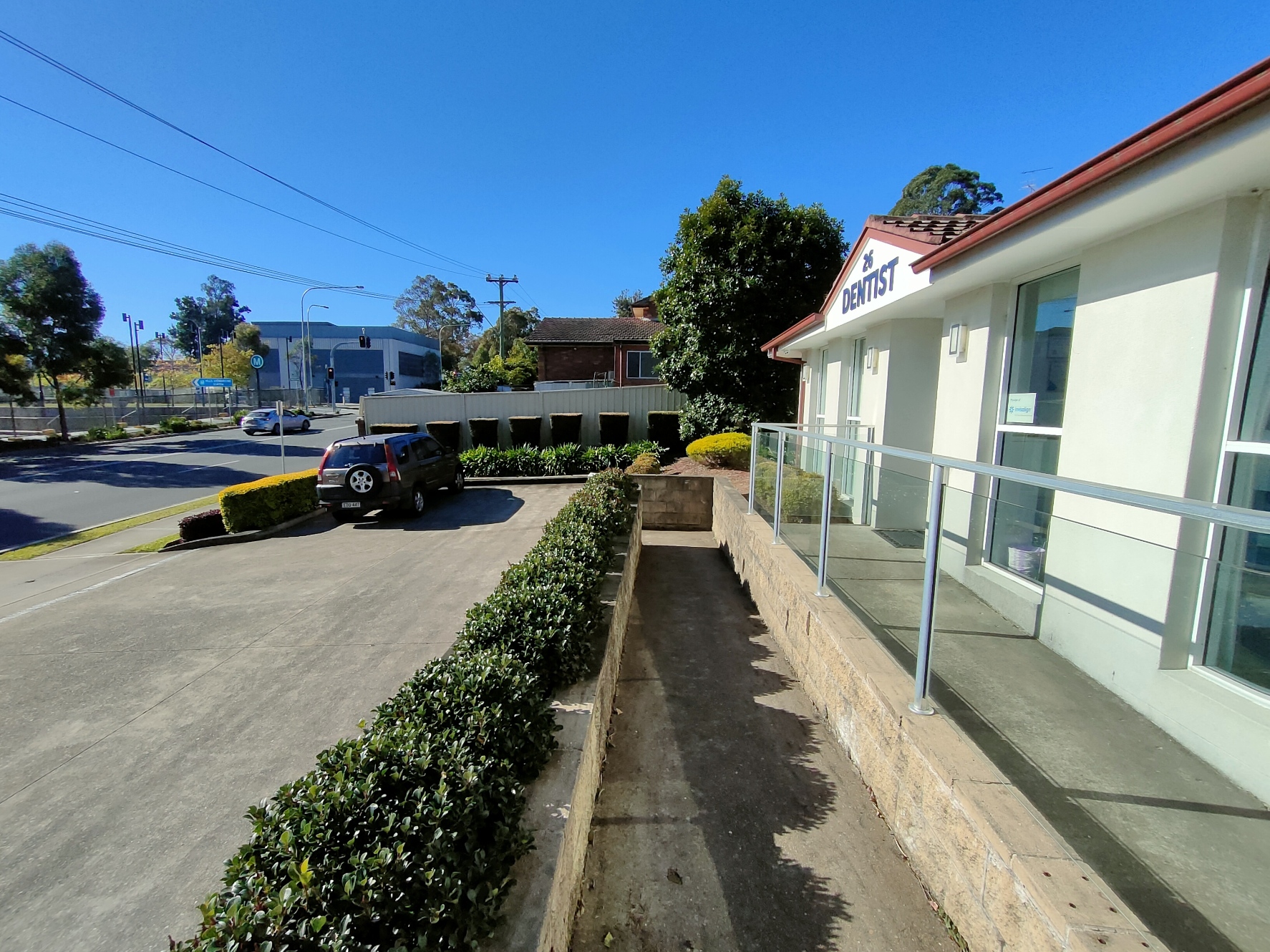Dental Fillings, Inlays and Onlays
Dental Fillings
Inlays & Onlays
Dental Fillings, Inlays and Onlays are all different types of dental restorations.
Restorations are used to:
- Treat dental cavities
- Repair chipped or cracked teeth
- Repair worn-down teeth
- Treat cosmetic concerns
What are Dental Fillings?
A dental filling is a procedure that is used to fill a cavity or a hole in a tooth. You may need a dental filling if you have tooth decay or have a broken tooth. Restoring your damaged tooth as soon as possible is really important in protecting it from further damage and more complicated and costly procedures such as Root Canal Treatment
What types of dental fillings are there?
The 3 main materials used for dental fillings are composite resin, glass ionomer cement and amalgam.
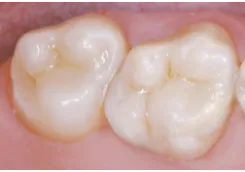
Composite Resin
Composite resins are tooth-coloured fillings that can match the colour of your tooth and look very natural. They are made of synthetic resin, are strong, and can be used for both large and small cavities.
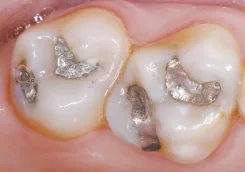
Amalgam
Amalgam is a metal filling material that has been used in dentistry for over 150 years. It contains mercury, tin, copper and other trace metals. Amalgam has been the subject of controversy for many years regarding its toxicity. However, the Australian Dental Association has stated that for most people, amalgam fillings are safe. At Castle Hill Dental Care, we choose to be an amalgam free practice to ensure that your health is not compromised, and you are not exposed to any toxic substances. However, we do not recommend you have your amalgam fillings replaced unless it is necessary to do so.
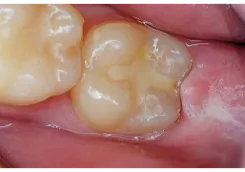
Glass Ionomer Cement
Glass Ionomers Cements or GICs are another tooth-coloured filling materials. They are usually not as strong as composite resins and for this reason, they are often used on baby teeth or on teeth where there is not much biting force. They can also be used as fissure sealants, where the back molar teeth have deep grooves or fissures. However, GIC does not last as long as composite resin and amalgam and are sometimes used as temporary fillings.
What to expect after a dental filling?
After you have had a dental filling, your tooth may feel a little sensitive when you bite your teeth together. This should settle down in a couple of days.
Inlays and Onlays
With larger cavities, inlays or onlays can provide a stronger alternative to fillings while still ensuring more conservative treatment compared to crowns.
They can be made of different materials including: composite resin, porcelain or metal (including gold).
Teeth are prepared in the same way as with fillings but unlike fillings, inlays or onlays are a 2-appointment procedure because they are made outside your mouth at our advanced dental laboratories before being bonded to your tooth.
They can be used to:
- Restore large cavities or cracked teeth
- Replace failing restorations or fillings
For more information, please Contact Us NOW!
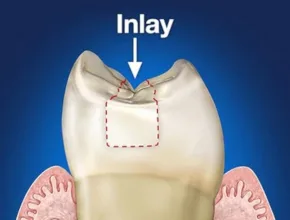
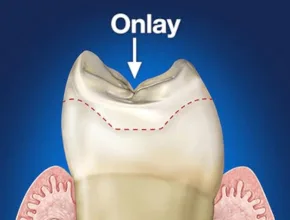
Common Causes For Needing Fillings, Inlays & Onlays
BROKEN OR FRACTURED TOOTH
A broken or fractured tooth is a dental emergency that typically requires immediate attention. When a tooth breaks or fractures, the pulp or nerve can be exposed. This can cause pain and lead to infection. In some cases, a broken or fractured tooth can be repaired with a dental filling or crown. However, if the pulp is severely damaged, the tooth may need to be extracted.
LARGE CAVITIES
Large dental cavities are a common problem that can occur in both adults and children. They are caused by a variety of factors, including poor oral hygiene, eating sugary foods and lack of saliva. Large dental cavities can cause pain, tooth loss and even infection if left untreated. Treatment options include fillings, root canals, inlays or onlays and in some cases, tooth extraction.
TOOTH DECAY
Tooth decay is a common chronic disease. It occurs when bacteria on your teeth and gums (plaque) meet sweet food and drinks and cause acid in your mouth. This increases the chance of getting dental decay and gum disease. Poor oral hygiene is the main cause of tooth decay but other factors such as poor diet, lack of saliva and genetics can also contribute. Tooth decay can be treated with dental procedures such as fillings, inlays or onlays. It’s important to brush your teeth twice a day with fluoride toothpaste and eat a healthy diet to help prevent future tooth decay.
What to expect when getting your filling, inlay or onlay
at Castle Hill Dental Care
CAREFUL PREPARATION
We pride ourselves on providing superior patient centred care and keeping your visit with us comfortable. Your dentist will ensure your tooth is completely numb before removing all the decay.
QUALITY TREATMENT
Our practice uses only tested and proven materials with no or minimal health hazards, so you can be confident your filling will last and it is safe.
ATTENTION TO DETAIL
Our dentists always adjust and polish your fillings to ensure they look, feel and function just like your natural tooth and so you get the most out of your new smile.
SMILE WITH CONFIDENCE
We know how important it is for you to get on with your day. Routine visits are recommended to check everything in order, so schedule your next check-up and help us, help you.
Frequently Asked Questions
What option is best for me, filling or an inlay/onlay ?
Typically, fillings are more conservative, cheaper, require less appointments and are easier to fix. However, some cases, particularly larger cavities, can greatly benefit from the added strength that inlays/onlays provide.
Choosing the best option is dependent on many factors including the size of the cavity, the location of the cavity, aesthetics and your financial budget.
At Castle Hill Dental Care, we recommend booking a consultation or NO GAP check-up and clean, so your dentist can get to know your expectations, assess your tooth and provide you with all the information you need to make an informed decision.
How do I take care of my fillings, inlays and onlays ?
Just like your natural teeth, it’s important to take care of your fillings too because although they can last many years, all fillings eventually need to be replaced.
They are usually worn down over time from eating, drinking, chewing or grinding and tooth decay can develop along the edge of the filling or underneath it.
Our recommendations:
- Floss daily
- Brush twice a day with a fluoride toothpaste
- Avoid chewing on hard objects
- Book regular check-ups at the dentist
Can I whiten my fillings, inlays and onlays ?
Unfortunately, fillings, inlays and onlays cannot be whitened as your natural tooth can.
If tooth decay is present, the tooth must be filled prior to bleaching to ensure the pulp does not become traumatised. After having your teeth bleached, we recommend waiting a few weeks to ensure the colour has stabilised before resurfacing or redoing your filling to match your new whiter colour.
If there is no decay present, we recommend completing your whitening prior to placement of any fillings, veneers, crowns or dentures.
How much do fillings, inlays and onlays cost ?
Dental filling price can range in cost from $205-$500 while inlays and onlays can range from $800-$1600. However, the cost of these treatments can vary if additional complex treatment is required.
Most health insurers will provide a level of cover for this treatment and at Castle Hill Dental Care, we offer a range of flexible payment options to ensure you can get the treatment you need in a timely manner.
Can I smoke after a dental filling ?
Smoking or vaping is generally not recommended especially shortly after fillings as it may weaken the immune system or lead to an infection.
Before and After Photos
Fillings, Inlays and Onlays
Our experts will help you choose the best filling, inlay or onlay for you
Lorem ipsum dolor sit amet consectetur adipisicing elit sed do eiusmod tempor incididunt ut labore et dolore Lorem ipsum dolor sit amet, consectetur adipisicing elit, sed do eiusmod tempor incididunt ut labore et dolore magna aliqua.
Carolina Monntoya
Managing DirectorLorem ipsum dolor sit amet consectetur adipisicing elit sed do eiusmod tempor incididunt ut labore et dolore Lorem ipsum dolor sit amet, consectetur adipisicing elit, sed do eiusmod tempor incididunt ut labore et dolore magna aliqua.
Peter Rose
ManagerLorem ipsum dolor sit amet consectetur adipisicing elit sed do eiusmod tempor incididunt ut labore et dolore Lorem ipsum dolor sit amet, consectetur adipisicing elit, sed do eiusmod tempor incididunt ut labore et dolore magna aliqua.

